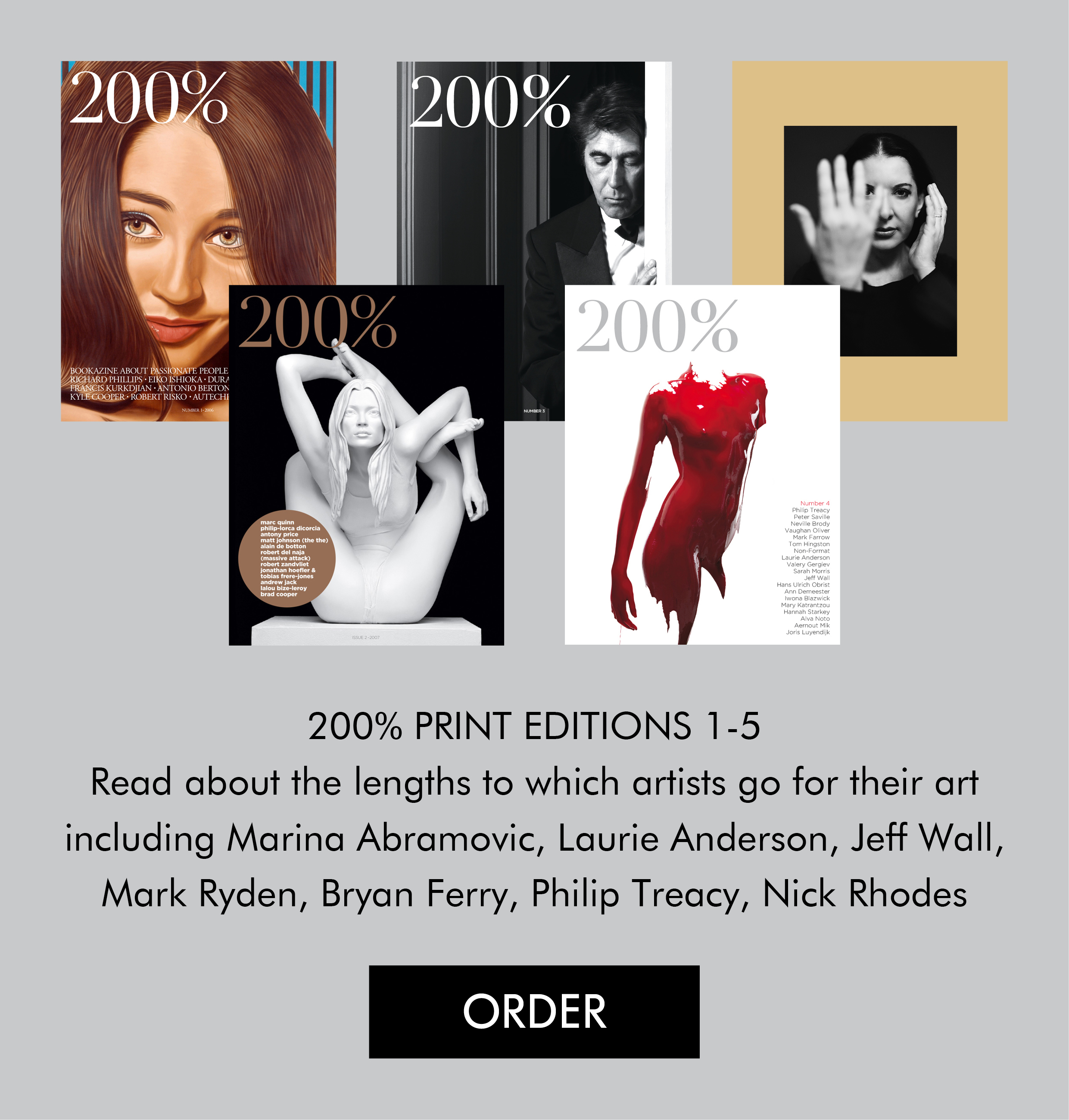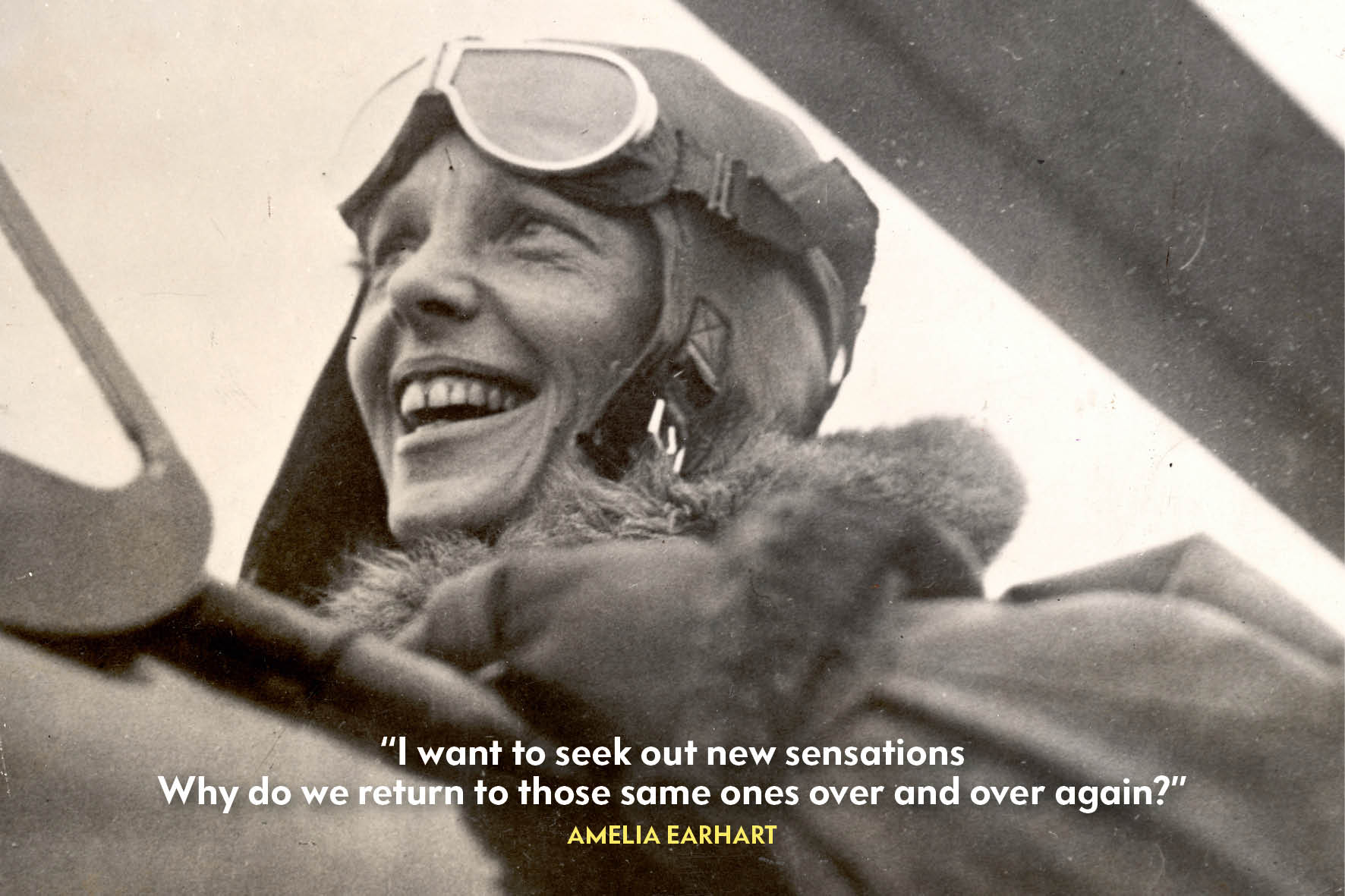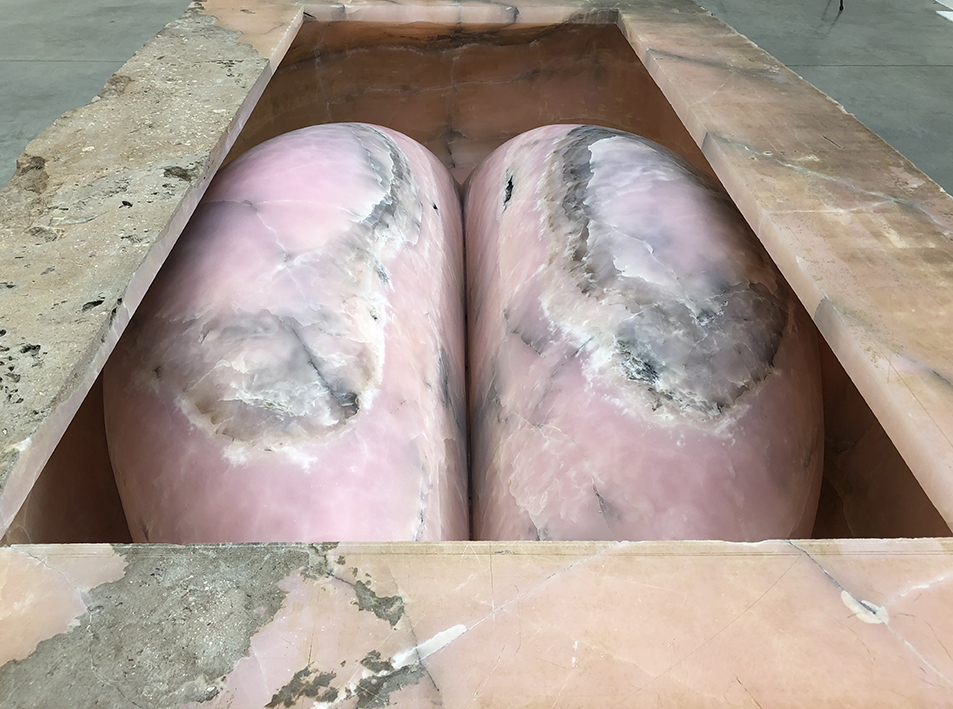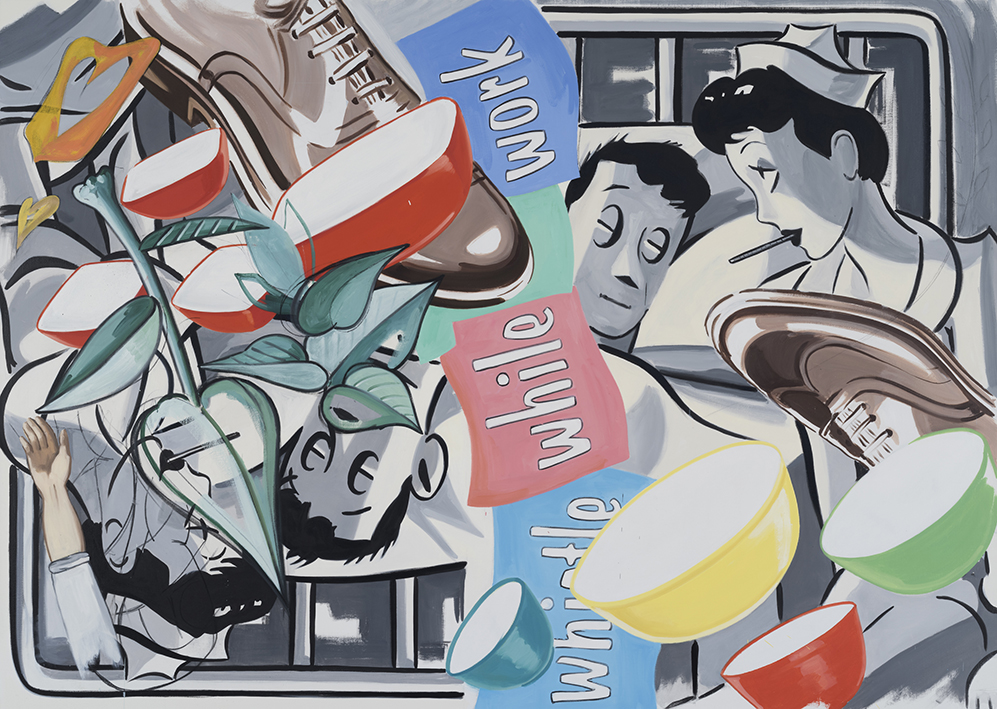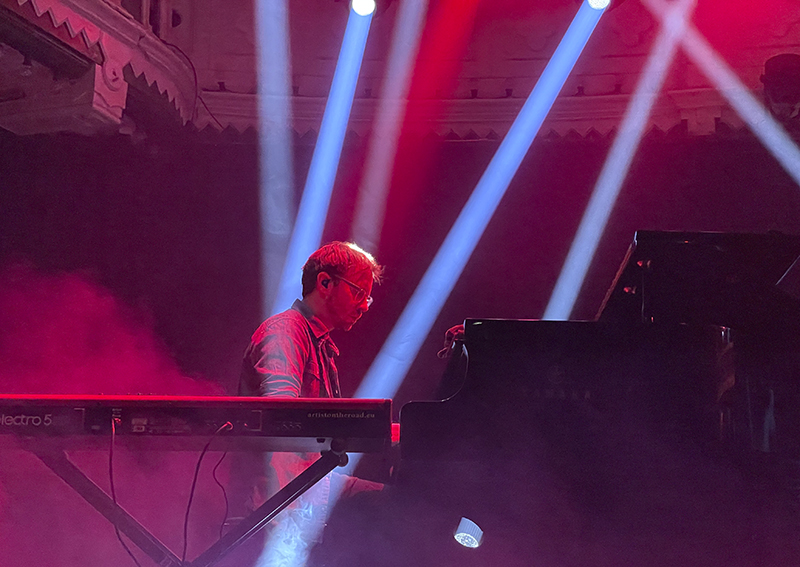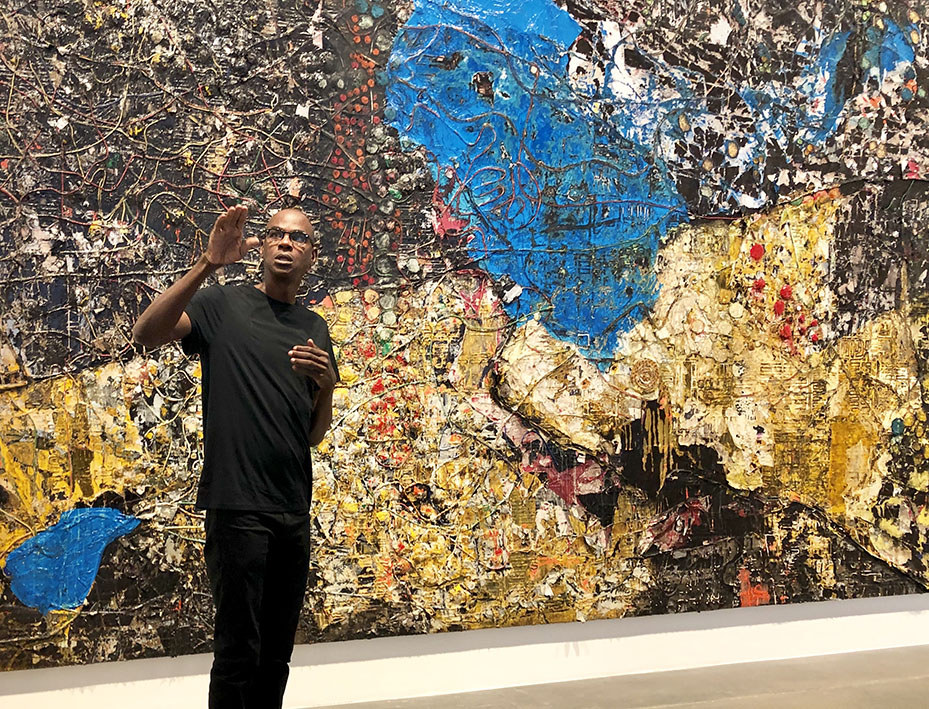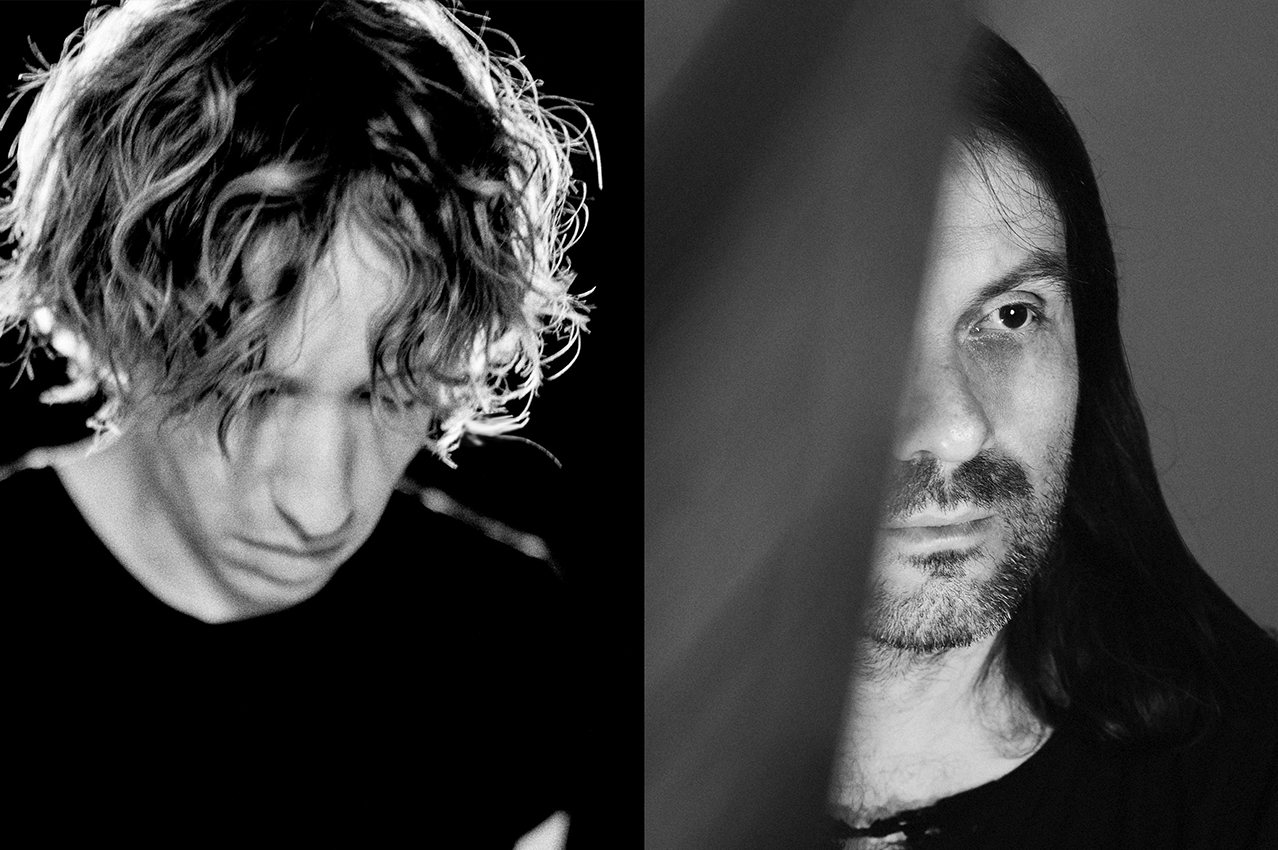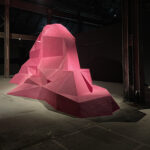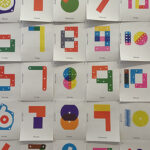
Art Tracey Emin – A Fortnight of Tears
“I got to be a lot more honest about my work.” In her new show, Tracey Emin, shows more of herself than she has ever done before.
“Tracey can you look over here?”
“Tracey, Tracey can you look over here, please?”
With a mixture of amusement and astonishment I witnessed a frenzy at an art gallery that usually takes place on the red carpet of a film premiere. A group of 50 photographers were yelling the name of Tracey Emin to get the artist’s attention and face their cameras whilst she was standing in front of her work at the press view of her new show ‘A Fortnight of Tears’ at White Cube gallery. She poses patiently and for every camera she gives the best she can. When Emin suggested to the photographers to take a picture of her with one of her sculptures in another room they followed her like ducklings following their mother. “I’m the only one allowed to sit here”, she joked when she took a seat on one of her colossal bronze sculptures. She seemed amused by the whole situation and took out her phone to make pictures of the group of photographers who were taking pictures of her.
 Emin is used to Media attention for her work and herself since she became a celebrity within and beyond the art world in the 1990s. In that period she created two of her most infamous works. She exhibited her unmade bed at Tate Gallery and her tent for the group show ‘Minky Manky’. For the latter work she embroidered the names of men and women she slept with on the lining of a blue tent and titled it ‘Everyone I Have Ever Slept With 1963-1995′. These works, plus a notorious chapter of her party girl days when she made a drunk appearance on live TV, generated a lot of exposure in the British Media and sparked a public debate, “Is this art?”
Emin is used to Media attention for her work and herself since she became a celebrity within and beyond the art world in the 1990s. In that period she created two of her most infamous works. She exhibited her unmade bed at Tate Gallery and her tent for the group show ‘Minky Manky’. For the latter work she embroidered the names of men and women she slept with on the lining of a blue tent and titled it ‘Everyone I Have Ever Slept With 1963-1995′. These works, plus a notorious chapter of her party girl days when she made a drunk appearance on live TV, generated a lot of exposure in the British Media and sparked a public debate, “Is this art?”
The party girl image may have caused that Emin’s art was not always taken seriously and even ridiculed by the public and the press, but she has been courageous, persistent and put herself into a vulnerable position by making autobiographical art about taboos such as rape, abortion, bullying, suicide, losing self-respect. She also has a unique talent into translating these traumatic experiences of her turbulent life into touching, uncompromising, poignant art that burns inside your brain.
A film from 1996, ‘How it Feels’, is screened in the auditorium of the show and provides insight into why Emin makes the art she makes. In a series of street interviews she recounts her botched abortion. After her abortion she felt so unwell that she had to go the hospital. On her way she asked the taxi driver to pull over as she felt something slip between her legs. She put her hand there and between her thighs and the palm of her hand she held a foetus. This horrific incident made Emin realise that if she was going to make art, it had to be autobiographical. “It couldn’t be about a fucking picture, it couldn’t be about something visual, it had to be about where it was really coming from,” she says.
 Watching the film and some other works in the show gave me the shivers. The painting ‘They Held me down while he Fucked me 1976′, is based on a childhood trauma. When Emin was 13, her 14 year girlfriend and her 19 year old boyfriend held her down whilst the boyfriend’s mate raped her. They thought she needed to lose her virginity not knowing that she had been raped four months before. Emin’s depiction of the scene is not as graphic as the brutal title as the figures are painted with gestural brushstrokes reminiscent of Willem de Kooning.
Watching the film and some other works in the show gave me the shivers. The painting ‘They Held me down while he Fucked me 1976′, is based on a childhood trauma. When Emin was 13, her 14 year girlfriend and her 19 year old boyfriend held her down whilst the boyfriend’s mate raped her. They thought she needed to lose her virginity not knowing that she had been raped four months before. Emin’s depiction of the scene is not as graphic as the brutal title as the figures are painted with gestural brushstrokes reminiscent of Willem de Kooning.
 In ‘The Ashes Room’ Emin mourns the death of her mother. The atmosphere in the room feels like a burial chamber with subdued light and a body of work hanging on grey coloured walls and displayed in vitrines. ‘We Said Goodbye’, ‘I was too young to be carrying your Ashes’ and ‘Another Day of Summer Without You’ are intimate works about loss and grief. In the works Emin expresses feelings of empathy, solace and abiding love for her mother that are so palpable that it brought up memories of relatives I have lost in my own life.
In ‘The Ashes Room’ Emin mourns the death of her mother. The atmosphere in the room feels like a burial chamber with subdued light and a body of work hanging on grey coloured walls and displayed in vitrines. ‘We Said Goodbye’, ‘I was too young to be carrying your Ashes’ and ‘Another Day of Summer Without You’ are intimate works about loss and grief. In the works Emin expresses feelings of empathy, solace and abiding love for her mother that are so palpable that it brought up memories of relatives I have lost in my own life.
 In another room the viewer is overwhelmed by a series of selfies which are blown up to two meters high prints that Emin took of herself during her periods of insomnia. Emin is unabashed as she portrays herself with a big fat lip when she got stung by a wasp, in tears or after a blepharoplasty. She looks exhausted and you can sense her loneliness, frustration and desperation of not being able to sleep. “It’s like dying from the inside”, she describes her condition in the wall text.
In another room the viewer is overwhelmed by a series of selfies which are blown up to two meters high prints that Emin took of herself during her periods of insomnia. Emin is unabashed as she portrays herself with a big fat lip when she got stung by a wasp, in tears or after a blepharoplasty. She looks exhausted and you can sense her loneliness, frustration and desperation of not being able to sleep. “It’s like dying from the inside”, she describes her condition in the wall text.
Emin had the title for the show ‘A Fortnight of Tears’ for fifteen years, but she never used it. The title is inspired by two periods in her life that she continuously cried. “When my mum died a couple of years ago I cried every day for two weeks. After two weeks my eye went really weird and I just couldn’t cry anymore”. The other period was in her 30s when her relationship ended with someone she lived with for six years. “The reason why I cried so much was not because we parted, but it was possibly my last chance of having children. I was crying for the loss of my future. When my mum died, I was crying for my past. I thought, the next show that I have that’s definitely going to be the title.”
 In the show there is a lot to be tearful about, but for Emin the show isn’t all doom and gloom. She considers her series of insomnia pictures amusing and when you stand in the room surrounded by all these huge faces staring at you there is a tragicomic element to it. It’s one of the sparse examples in this exhibition where Emin shows one of her other talents; to present serious subject matter with a clever or impish sense of humour like her tent. In 2003, Emin explained to a group of students at Brighton University, that the idea behind the work was “my way at getting back at Carl Freedman”, her then boyfriend and curator of the show ‘Minky Manky’. He told her he couldn’t include a work by his girlfriend in the show unless she made a big work instead of her small scale-stuff that she was doing at the time. This infuriated Emin and she appliquéd his name on the inside of the tent which made a reviewer comment: “She slept with everyone, even the curator”.
In the show there is a lot to be tearful about, but for Emin the show isn’t all doom and gloom. She considers her series of insomnia pictures amusing and when you stand in the room surrounded by all these huge faces staring at you there is a tragicomic element to it. It’s one of the sparse examples in this exhibition where Emin shows one of her other talents; to present serious subject matter with a clever or impish sense of humour like her tent. In 2003, Emin explained to a group of students at Brighton University, that the idea behind the work was “my way at getting back at Carl Freedman”, her then boyfriend and curator of the show ‘Minky Manky’. He told her he couldn’t include a work by his girlfriend in the show unless she made a big work instead of her small scale-stuff that she was doing at the time. This infuriated Emin and she appliquéd his name on the inside of the tent which made a reviewer comment: “She slept with everyone, even the curator”.
I asked Emin if she finds it difficult and sometimes struggles to share these personal experiences with the viewer. “I talk about my life and my experiences because I know for an absolute fact it is helping some 14 year old girl who went through the same experiences as me. I think for a long time I’ve been misunderstood. People have been really willing to bully me, to deride me because they didn’t want to take on the issues that I was addressing. I think we can make things better by talking about these issues, and bring them to the foreground. All of the work in the exhibition does that”.
 The zeitgeist has completely changed with the emergence of movements like Time’s Up and MeToo. Women are speaking up and share their stories about sexual harassment and sexual assault they have experienced. Emin, though, was put down by people for years and years. “I was told that I was shit, told I was not good enough or I was doing the wrong thing”, she says. “People even asked me if I put myself in these vulnerable situations so that I could make art? And one day you wake up and you know what you have been doing is right and what you always have been doing is right”. She adds, “I realise that I’m in the last part of my life. I’m showing a 1,000 times more of myself [in my work] than when I started. I got to try and get it right even if it’s not exactly right. I got to be a lot more honest about it. It is not a game”.
The zeitgeist has completely changed with the emergence of movements like Time’s Up and MeToo. Women are speaking up and share their stories about sexual harassment and sexual assault they have experienced. Emin, though, was put down by people for years and years. “I was told that I was shit, told I was not good enough or I was doing the wrong thing”, she says. “People even asked me if I put myself in these vulnerable situations so that I could make art? And one day you wake up and you know what you have been doing is right and what you always have been doing is right”. She adds, “I realise that I’m in the last part of my life. I’m showing a 1,000 times more of myself [in my work] than when I started. I got to try and get it right even if it’s not exactly right. I got to be a lot more honest about it. It is not a game”.
Written by Thierry Somers

